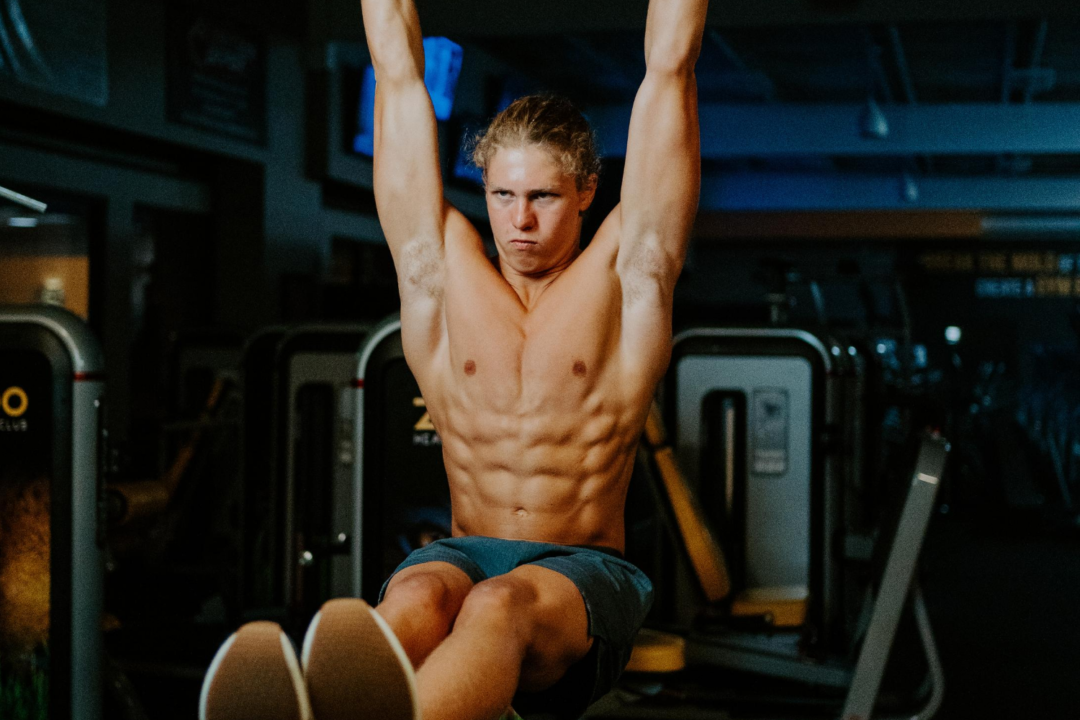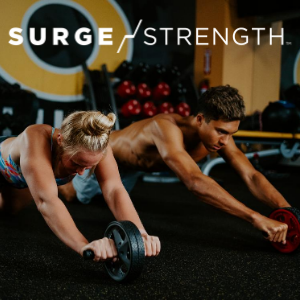While many people want to gain muscle mass and bulk through weight training, many swimmers want to avoid it. When most people think about looking like a swimmer, they picture a high strength to mass ratio, someone with good mobility, particularly in the shoulders, and a rock-solid core. A big dryland goal for almost every swimmer is to figure out how to get stronger without gaining muscle muss.
Some athletes fear that they will have extra drag in the water if they gain muscle from dryland. While many people lift weights in hopes to get bigger and more muscular, it is unlikely that with a tailored dryland program this is going to happen. In order to get big from lifting, there are several muscular and hormonal adaptations that must be manipulated in a way that promotes hypertrophy.
Hypertrophy is defined as an increase in the size of muscle fibers within a cross-sectional area. While some hypertrophy is necessary for muscles to get more efficient, picking up a weight here and there or even consistently lifting hard does not guarantee bulking up or feeling bigger.
Just think of the billion-dollar supplement industry that thrives off helping people with their bulking goals. There’s a reason the industry is that profitable – because gaining muscle mass and bulk is actually pretty difficult. So, don’t worry that after doing a few biceps curls you’ll suddenly be able to see massive bicep gains.
There are many benefits to lifting weights in dryland that athletes could easily miss out on if they are worried about getting too big. Below, we are breaking down how to train so that you’ll get stronger without gaining muscle mass.
1) Focus on Primarily Neuromuscular Adaptions
The body becomes more effective at moving by recruiting more motor units in ways which the brain deems more efficient. In order to achieve this, the brain recruits the bigger muscle fibers before it recruits the smaller ones. This scientific theory, known as selective recruitment, means that when training for maximal strength, the body is going to bypass the smaller muscles and instead recruit the bigger muscles first. Because they are finding better firing patterns for these muscles, there is no need to “grow” the muscle fibers. Instead, the brain creates pathways to recruit the prime movers of an exercise. This elicits smoother contractions and gives the athlete more rhythm in each muscular “rep.”
For example: Take two athletes with the same body mass and technique, but one person can do 10 pull-ups while the other can only do 5. The athlete who can do more pull-ups does not necessarily have more mass to move but they have more capacity to do work. Meaning their brain has gotten better at recruiting muscle fibers and creating neuropathways. This translates to the water as well. The athlete with a higher capacity of work, aka a higher strength to mass ratio, is going to be able to recruit more muscle fibers in any given race.
2) Use load, intensity, sets, and reps, and volume to optimize structural changes
When thinking of a sport where weight classes are involved, such as wrestling or Olympic weightlifting, we know that many athletes train for strength without gaining very much weight. It is very possible to maintain size when properly manipulating the right training principles. The way in which an athlete trains will determine the hormonal response the body produces. It is recommended to keep time under tension to 30 seconds or less.
Another way to achieve optimal structural change is to train at a high intensity. Think of staying in the rep-range of under a 6-rep max in order to primarily use the ATP-PC energy system that recruits those big muscle fibers and fatigues quickly. Completing high-intensity movements with lower volume allows the muscles to adapt without growing significantly in size. While it is important to have some structural change in the muscle, it will not act as the main adaptation unless the reps are high in volume and the body is primarily being pushed to rely more on the fast glycolysis system.
The small variables of dryland workouts add up over time. It can’t be overstated that if you want to get stronger without gaining muscle mass you need to constantly be checking in on the workout variables like sets, reps, and rest to ensure you’re avoiding hypertrophy optimized zones.
3) Take advantage of metabolic change
Swimmers that do both strength training in addition to yardage in the pool see better improvements in their aerobic work. As the body gets more efficient at lifting weights and performing dryland training it converts certain sub-types of fast-twitch, type II muscle fibers, to other type II sub-types that have more mitochondria and therefore improve aerobic endurance.,
Not only is training for strength in the weight room helping the athlete complete exercises like pull-ups more efficiently, but it is allowing them to stay in that aerobic energy system longer. In turn, the athlete can swim at a faster rate for longer than an athlete who only does anaerobic activity or avoids dryland training altogether.
CONCLUSION
Strength training is beneficial to a swimmer when implemented properly. With both the correct number of calories consumed metabolically through swimming and the implementation of the right training variables, it is nearly impossible to see a swimmer bulk up or move up in weight from doing dryland a couple of times a week.
Hypertrophy work must be trained diligently and in a very specific rep range/intensity in order to make an athlete significantly bigger. Think of a bodybuilder and the time, dedication, dieting, and specificity they go through to maintain the muscle mass they are desiring. This isn’t the purpose that dryland serves.
With swimming being the main training stimulus, a dryland program will only help a swimmer recruit the muscle fibers they need to build more optimal and smooth muscle contractions. Training for strength through dryland workouts is what sets a swimmer apart from a swimmer who only trains in the water and doesn’t have a dryland program.
Don’t be fooled, it is possible to get stronger without gaining muscle mass! Follow the 3 steps outlined to get on the right track.
And if you want more help…
Get Started Now With our SURGE Strength Programs
Become SURGE Strength Dryland Certified (SSDC)
BUILD BETTER ATHLETES TO GENERATE FASTER SWIMMERS
Courtesy of SwimSwam’s exclusive dryland training partner, SURGE Strength.
SURGE Strength, a strength training brand created by Chris Ritter, CEO of RITTER Sports Performance, aims to build better athletes and faster swimmers through dryland programs, and coaching education.







Good article. People think lifting weights will make them “bulky”. It is actually very hard to get bulky and almost impossible when you do as much cardio as a swimmer.